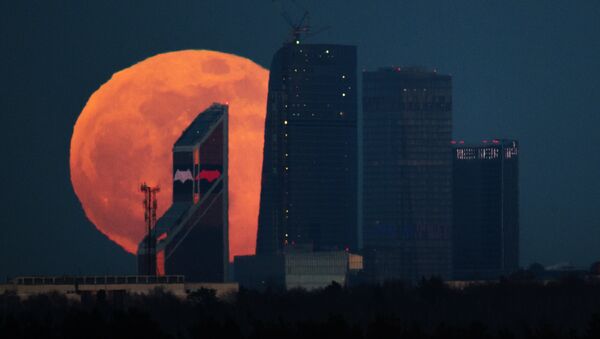On the first night of the year, the moon will approach the Earth at a distance of 356 thousand kilometers and will look 14% bigger and 30% brighter compared to the moment when it’s at the farthest point from the Earth’s orbit.
“A beautiful picture awaits the observers on the night of January 2 — at midnight the supermoon will be high above the constellation of Orion, in Gemini,” the Moscow Planetarium said in a statement, stressing that the event will be visible till Tuesday morning in Moscow, given that there will be cloudless weather in Moscow.
Once skies had cleared last night, the big glowing #supermoon was looking impressive. Same again tonight, with precise Full Moon at 02:25, and perigee 4 hours earlier. It's the biggest one of the year. More at https://t.co/tOXEBC9Khg @CavGC pic.twitter.com/bMNqh2glJo
— Garry Nicholson (@WeatherEagle) 1 января 2018 г.
#Supermoon (biggest of 2018) happens tomorrow on #NewYearsDay!🌕
— Roger Craig Smith (@RogerCraigSmith) 1 января 2018 г.
(waxing gibbous at 97% full tonight from Boise, ID) pic.twitter.com/k6W4cjLhrJ
The super moon. 2018 welcome. 🌕🐑 pic.twitter.com/MNyDAhajSK
— Shepherdess (@woolismybread) 1 января 2018 г.
Though it’s hard to observe the change in the moon's size during the super moon with the naked eye, such astronomical events may stimulate the interest in astronomy, according to Russian astronomer Vladimir Surdin.
The New Year’s supermoon will be the first noteworthy astronomical event in a series of similar occasions this year. The second supermoon will occur on January 31 and will coincide with the full moon eclipse.

